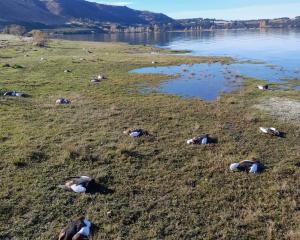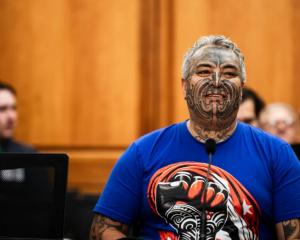
A former Christchurch man beaten to death with a cricket bat in Dunedin had a huge hole in the side of his skull comparable to a victim of a plane crash, a pathologist says.
When the body of 45-year-old Brent Andrew Bacon was examined by pathologist Dr Charles Glenn, he found a hole stretching from the right eye socket round to the back of the head, the High Court at Dunedin heard.
The jury this morning was shown a computer-generated image of the extensive damage caused by John Kenneth Collins (39) on February 4, 2019.
He admitted wielding the bat but said he only used it because Mr Bacon “came at him” in a paranoid state.
The defendant admitted charges of interfering with a body and unlawfully taking a vehicle at the trial's outset on Monday but his counsel Len Andersen QC said there was no murderous intent behind the attack on the victim.
Mr Bacon's body was found beside a rural gravel road, concealed in a blue sleeping back and dumped beneath a low-hanging tree 35km north of Dunedin, two weeks after his death.
Detective Iain Notman, who was in charge of the scene, said the corpse was “tucked just under the canopy” with the feet and head protruding.
As a result it was in a state of decomposition
On February 21, Dr Glenn performed an autopsy.
He told the court today that the absence of skin meant there would be inherent limitations to his findings.
“It really can inhibit our ability to be decisive,” he said.
Dr Glenn described the major trauma to the skull as a “large injury” and he found about 30 bone fragments inside the head as a result of “egg-shell fractures”.
Crown prosecutor Richard Smith asked the pathologist to comment on the force required to cause such damage.
“It's a lot,” Dr Glenn said.
“We routinely see displaced fragmentation of the skull in motor-vehicle accidents or a plane crash, or a fall from some distance.”
He also detailed a 4cm laceration to the centre of the forehead and a fracture to a bone in the neck.
Mr Andersen asked whether the injuries were consistent with an overhand blow with the cricket bat to the forehead, followed by a sideways blow to the right of the head, causing the major skull defect.
Dr Glenn accepted that could have happened and stressed it would take “tremendous force”.
Rather than two blows, however, he believed there was a minimum of three – two to the head and one to the neck.
In his experience, the major “gaping defect” to the side of the skull was probably the result of multiple strikes, rather than one, as the defence suggested.
Radiologist Dr Andrew Gilkison was equivocal.
He told the jury it was difficult to differentiate between whether the injuries were the result of one “large event” or numerous lesser blows.
The jury was also shown x-rays of Mr Bacon's hands.
They revealed fractures to two fingers inside the palm of the right hand and one in the left hand.
There were two logical explanations, Mr Glenn told the court.
“It could be from the hand trying to stop whatever is causing the impacts to the head,” he said.
“It can also be someone placing a hand on the injured surface and another impact on the hand.”
Both medical witnesses accepted they were unable to tell whether any of the injuries occurred before or after death.
Collins' partner 32-year-old Aleisha Dawson helped dispose of the victim's body and the couple were found in Rotorua together on February 20 before being arrested.
She pleaded guilty and was sentenced as an accessory to homicide.
The trial continues.












